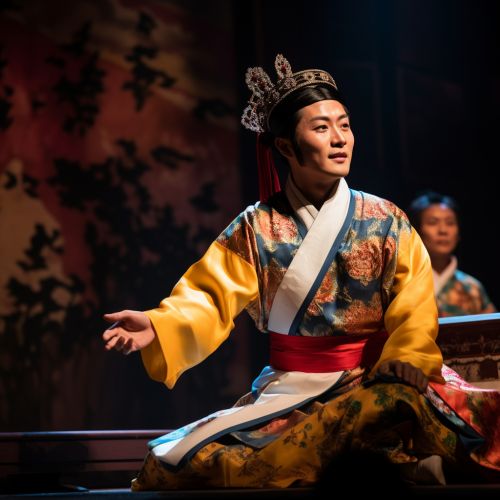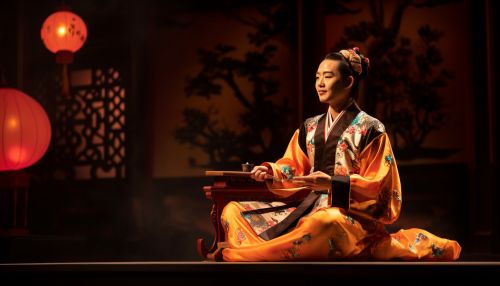Quyi
Overview
Quyi Chinese folk art form is a broad term that encompasses various forms of traditional Chinese storytelling and musical performances. The term "Quyi" itself translates to "what is said or sung" in Chinese. It is a significant part of Chinese culture and has been for centuries. The performances often involve singing, speaking, or even acting, and can be performed solo or by a group.


History
Quyi has a long history that can be traced back to the Song Dynasty (960-1279). It originated from folk songs and ballads, and gradually evolved into various forms of storytelling and musical performances. The development of Quyi was greatly influenced by the social and cultural changes in China throughout different dynasties. During the Ming and Qing Dynasties, Quyi became a popular form of entertainment in teahouses, streets, and theatres.
Forms of Quyi
There are numerous forms of Quyi, each with its unique characteristics and regional styles. Some of the most well-known forms include:
Pinghua
Pinghua storytelling is one of the oldest forms of Quyi. It involves a single performer narrating a story, often derived from historical events or classical literature. The performer uses a variety of vocal techniques and gestures to bring the characters and plot to life.
Pingshu
Pingshu storytelling is a form of Quyi that involves a single performer telling a story while seated on a stool. The performer uses a folding fan and a gavel as props to enhance the storytelling. Pingshu is known for its vivid character portrayals and dramatic plots.
Crosstalk
Crosstalk, or Xiangsheng crosstalk, is a form of Quyi that involves two performers engaging in a rapid-fire dialogue, often filled with puns, wordplay, and social satire. It is a popular form of entertainment in China, especially during the Lunar New Year.
Ballad Singing
Ballad singing, or Shuochang ballad singing, is a form of Quyi that combines storytelling with singing. The performer narrates a story while singing parts of the narrative to a melody. This form of Quyi is often accompanied by traditional Chinese musical instruments.
Performance
Quyi performances often take place in teahouses, theatres, or public squares. The performers are usually dressed in traditional Chinese attire and use various props to aid their storytelling. The performances are often interactive, with the audience participating by applauding or responding to the performer's cues.
Cultural Significance
Quyi plays a significant role in Chinese culture. It serves as a medium to preserve and pass down traditional Chinese stories, folklore, and social values. Quyi performances often reflect the social issues and values of the time, making them a valuable source of historical and cultural information.
Modern Developments
In recent years, efforts have been made to preserve and promote Quyi as a form of traditional Chinese art. Quyi performances are now often featured in cultural festivals and events, both in China and internationally. There has also been a resurgence of interest in Quyi among the younger generation, with many learning and performing Quyi as a way to connect with their cultural heritage.
